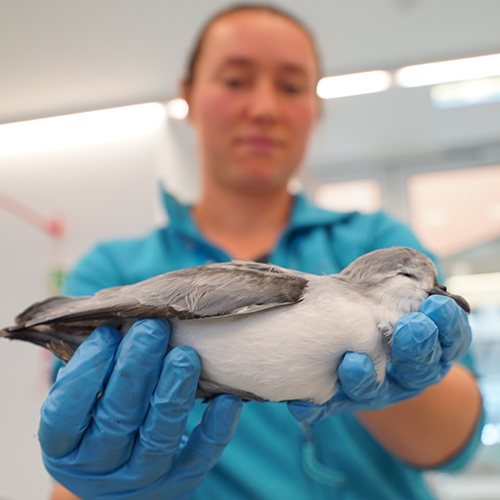The research published in the journal Scientific Reports examined ingested plastic and 11 metals and metalloids in two seabird species and found significant relationships with concentrations of aluminium, manganese, iron, cobalt, copper and zinc in the livers of slender-billed prions.
Lead author Dr Lauren Roman from the University of Tasmania and CSIRO said the effects were small, but given that seabirds already experience multiple challenges of the high seas such as prey shortage and severe storms, plastic may compound the impact of other stressors such as fisheries and climate change.
“Our study is the first to show a relationship in seabirds between plastic pollution, which is increasingly ubiquitous in our oceans, and the concentration of mineral nutrients in the liver,” Dr Roman said.
“It links the presence of several pieces of plastic in the gut with potential consequences for the nutrition of small seabirds and other marine animals, as similar nutrition links have already been observed in plastic-eating sea turtles.
“While more study is needed to better understand the link between plastic in the gut and seabird nutrition, this is a concerning finding for millions of seabirds that do have plastic in their stomach.
“A bird that has a lot of plastic in its stomach may be in poorer condition and therefore less likely to survive the increased frequency of storms or food chain perturbations expected under a changing climate,” Dr Roman said.
Co-author Dr Farzana Kastury from the University of South Australia said that while some mineral metals are an essential part of a bird’s diet, both essential and non-essential metals can be toxic depending on their type and concentration. “Potentially toxic elements such as lead and arsenic may adsorb and concentrate on the surface of plastics in the marine environment,” Dr Kastury said.
“Depending on the nutritional status of the seabirds which consume marine plastics, a fraction of these potentially toxic elements may be absorbed, negatively affecting the health of the birds,” she said.
Co-author Associate Professor Sophie Petit from the University of South Australia said it is difficult to determine the nutritional and toxicological effects of plastics on migratory birds such as prions that have huge foraging ranges.
“However, this new evidence suggests that even relatively few pieces of plastic can potentially have an impact on bird health,” Associate Professor Petit said.
“It’s a concern because, although the birds we sampled died as the result of a storm, what happens to ones that ingest many more pieces of plastic?
“This research is an important first step towards the evaluation of plastic impacts on wild seabirds,” Associate Professor Petit said


